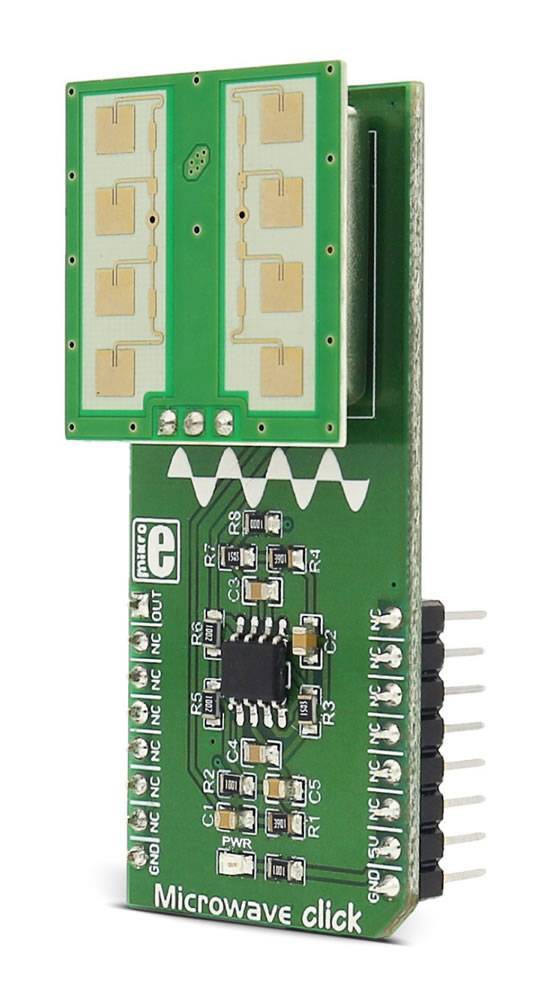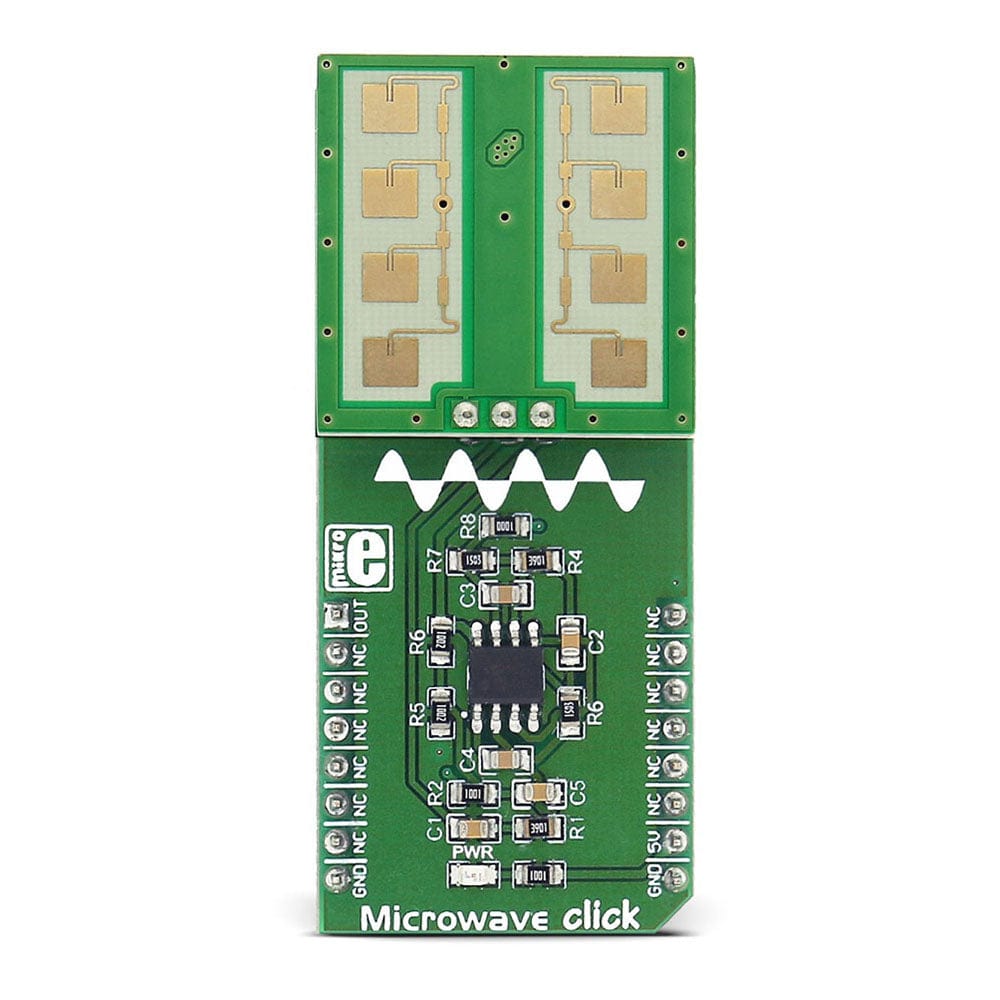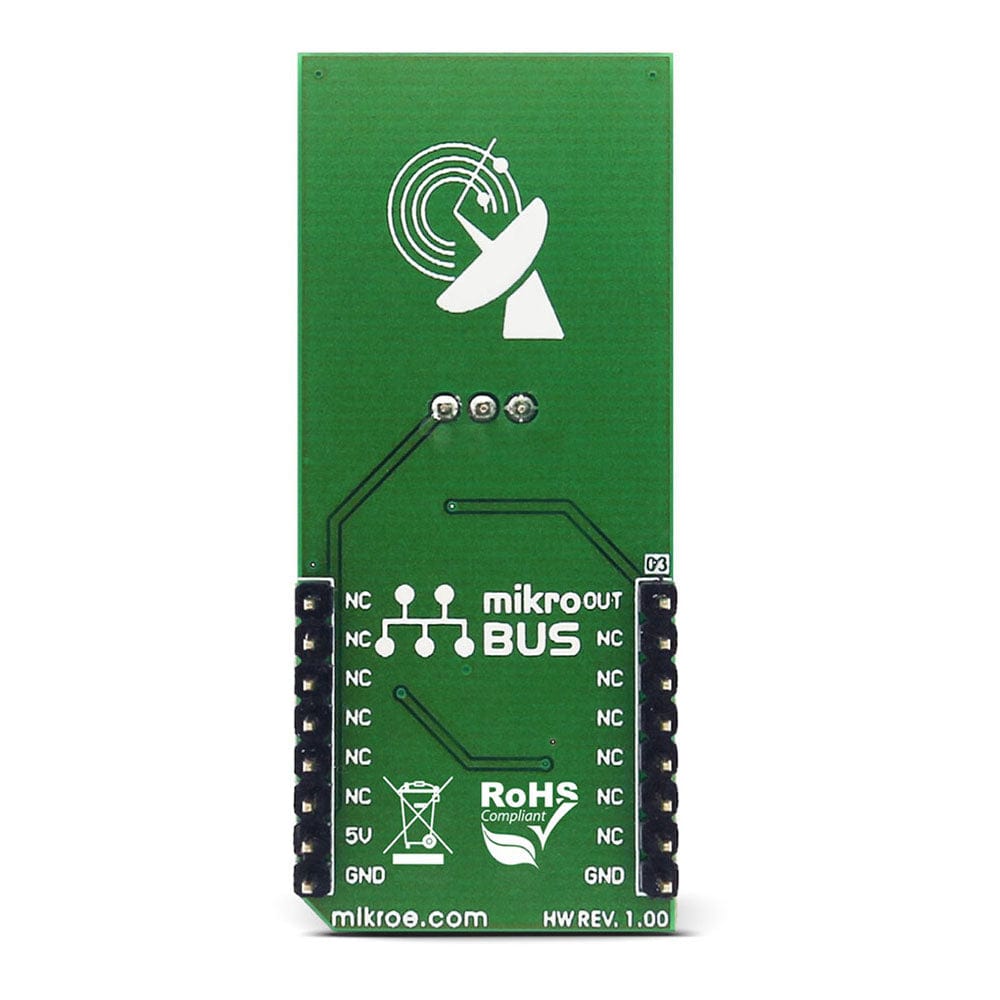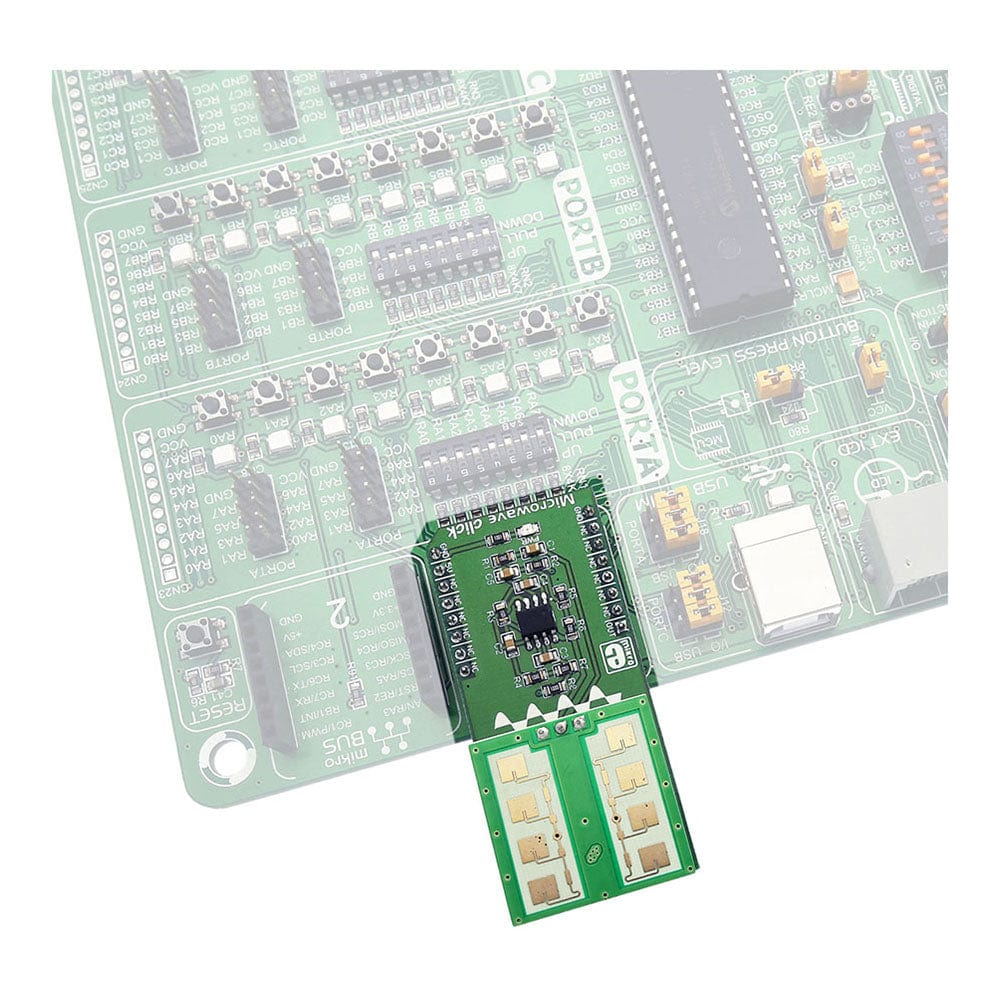



Overview
The Microwave Click Board™ detects movement, thanks to the PD-V11 a 24GHz microwave motion sensor. The typical use for Microwave Click Board™ is a proximity or motion detector in various applications and devices.
The Microwave Click Board™ can detect movement or proximity by using the Doppler effect. The onboard microwave motions sensor transmits waves and picks them back as they hit an object, with their frequency changed.
The board does not need optical visibility to work, and the waves can penetrate many kinds of barriers and obstacles.
Downloads
Das Microwave Click Board™ erkennt Bewegungen dank des PD-V11, einem 24-GHz-Mikrowellen-Bewegungssensor. Der typische Einsatzzweck für das Microwave Click Board™ ist ein Näherungs- oder Bewegungsmelder in verschiedenen Anwendungen und Geräten.
Das Microwave Click Board™ kann Bewegungen oder Annäherungen mithilfe des Dopplereffekts erkennen. Der integrierte Mikrowellen-Bewegungssensor sendet Wellen aus und empfängt sie mit veränderter Frequenz, wenn sie auf ein Objekt treffen.
Das Board benötigt keine optische Sicht, um zu funktionieren, und die Wellen können viele Arten von Barrieren und Hindernissen durchdringen.
| General Information | |
|---|---|
Part Number (SKU) |
MIKROE-2781
|
Manufacturer |
|
| Physical and Mechanical | |
Weight |
0.025 kg
|
| Other | |
Country of Origin |
|
HS Code Customs Tariff code
|
|
EAN |
8606018711628
|
Warranty |
|
Frequently Asked Questions
Have a Question?
Be the first to ask a question about this.





